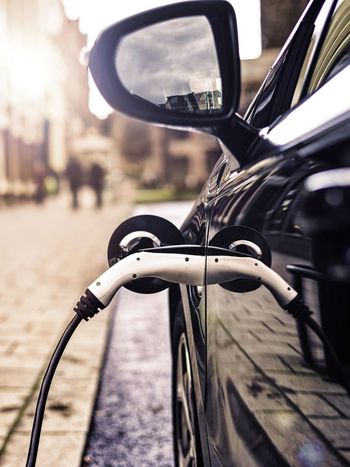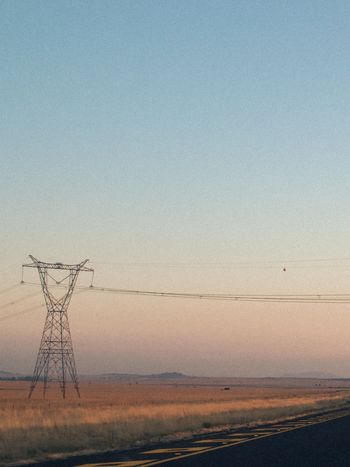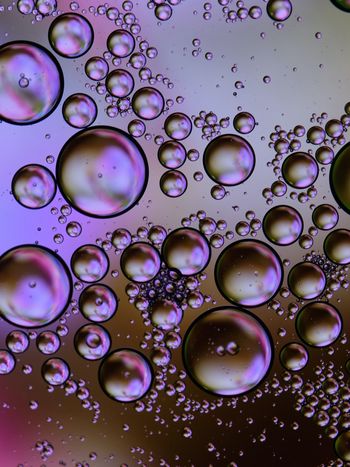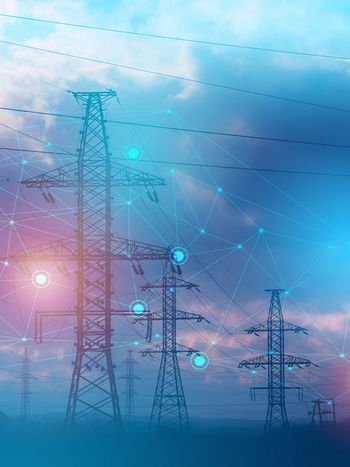A Virtually Hands-On Substation Experience for Interns
Calling the 2020 summer intern program for Pepco Holdings (PHI) unique would be an understatement. As the pandemic ripped through the world and disrupted much of normal society, many people, including a majority of PHI employees, were introduced to the reality of working from home. Many full-time employees had to deal with setting up a home office, kids learning virtually from home, and even remembering how to work their laptop webcams. Interns who were new to working full-time faced another set of challenges, including getting access to the necessary computer programs, knowing who to reach out to when they needed help with tasks and, most important, finding out what Pepco Holdings does as a company.
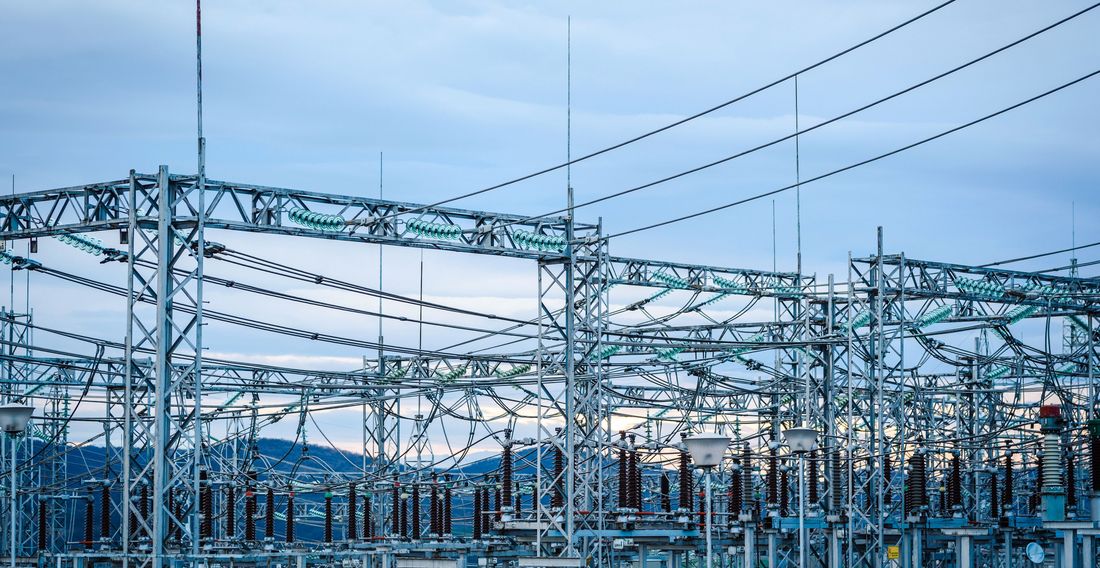
By Sunit Mitra, Pepco Holdings, and Cameron Polack, PE, Burns & McDonnell
In prior years, Pepco Holdings conducted weekly events throughout the two-month summer intern program. These included presentations on the functions of each department and basic power systems training, tours of various substations and power plants, and team-building events like scavenger hunts. Interns were also encouraged to join volunteer activities outside of work to network with fellow interns and members of the community. There has been an emphasis on face-to-face interaction and public speaking to prepare students for the transition into full-time employment. In 2020, however, the program was forced to go completely virtual. This meant adjusting the program to provide an educational and engaging experience for interns while they worked from home.
One of the biggest challenges for the virtual program was showing interns what it’s like to work at an electric utility. Being able to see high-voltage equipment in the field provides important context for what Pepco Holdings does. In the past, this was accomplished by escorting interns through a substation to see the equipment and explain how it functions.
Next Top Model
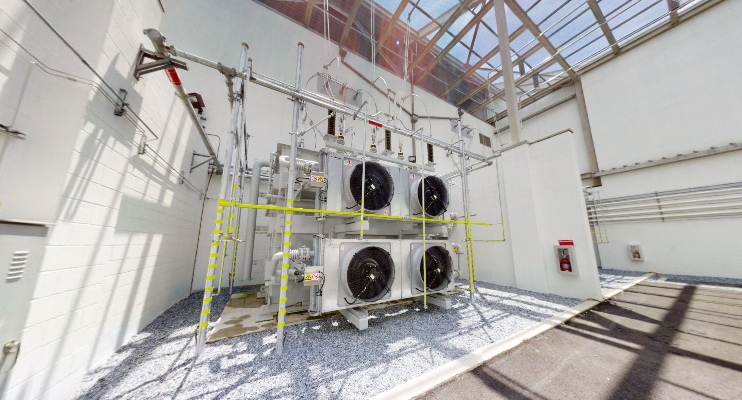
The intern planning committee brainstormed how to accomplish this in a virtual setting, initially considering using an existing 3D substation model to create a walkthrough for the interns. 3D models are initially developed as a part of the conceptual design for new substations. They enable the team to visually plan how equipment will be arranged at the site. However, it was challenging to repurpose an existing model for educational purposes because many of the details needed for students new to power systems were not fully developed, since these models were created to be conceptual in nature. Additionally, it would be difficult to navigate through these models in a large group setting.
Around the same time frame this was being explored, PHI was partnering with Burns & McDonnell on work that involved the use of high-resolution laser scanners to provide 3D maps of some substations, including their layout, equipment and cabling/conduit sizing. The maps stitch together multiple 360-degree scans taken throughout each substation. The project’s goal was to create a log to validate in-service equipment against documentation.
Because of its experience with LiDAR technology, PHI approached Burns & McDonnell about whether it was possible to create a walkthrough format of a substation for the intern program. Burns & McDonnell recommended using simple virtual reality headsets in combination with the 3D scans to create an immersive experience for the users. A 3D experience is created by clipping a smartphone directly into the headset to view the tour. The headsets were relatively inexpensive, which made it feasible to mail them to the interns prior to the virtual tour. With a plan in place, the partners could begin to implement the project.
The Scan Plan
The next step was to select the right substation for this walkthrough. PHI has constructed three new substations since 2017, ranging from an indoor six-transformer, 230/13.8-kV GIS distribution substation in the middle of downtown Washington, D.C., to a smaller four-transformer, 69/13.8-kV air-insulated substation in Montgomery County, Maryland. Since the target audience was college interns with minimal power systems experience, the smallest substation was chosen for simplicity.
There were many benefits to selecting one of the recently constructed substations. It was built to the latest substation design standards. The substation was well laid out, with its equipment grouped in a logical manner. Lastly, everything was clearly labeled, making it easy to point out specific pieces of equipment during a tour.
The team planned to scan the substation with two different cameras. The first, a LiDAR scanner, scanned the outside of the substation, including the transformer bays. The second camera had higher resolution and captured the inside of the substation, including the switchgear and the escutcheons on the test switches. Google Street View was added for the final presentation, since its car had recently passed the substation with high enough resolution for the front façade.
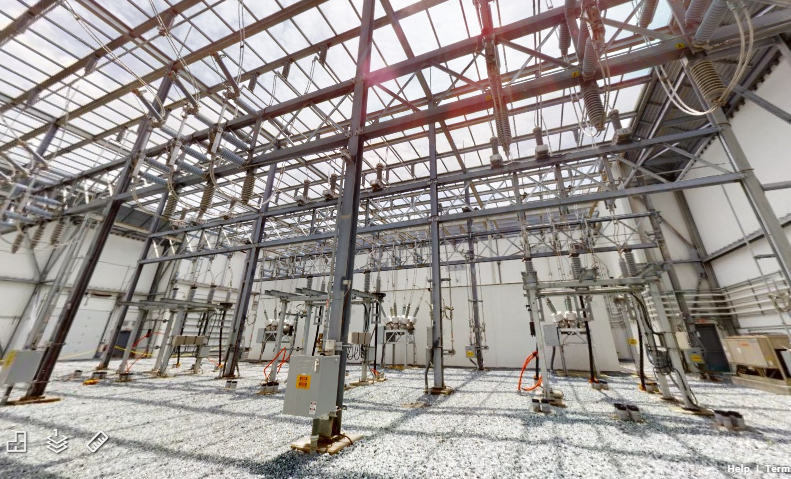
Once all the scans were collected and the files were uploaded, PHI and Burns & McDonnell set up the virtual tour, from setting the start point of the tour to marking identification tags for more information. PHI then mailed the headsets to all the interns.
Warm Reception
The presentation opened with the history of the substation about to be toured. Since it was just energized two years earlier, the interns were shown photos of the construction. Also explained were the community engagement and regulatory processes required to build a substation in a suburban environment. Finally, the electrical configuration of the substation was presented by giving an overview of the one-line diagram. Then the interns were asked to access a link on their phones and follow along in the headsets while the tour was led on-screen.
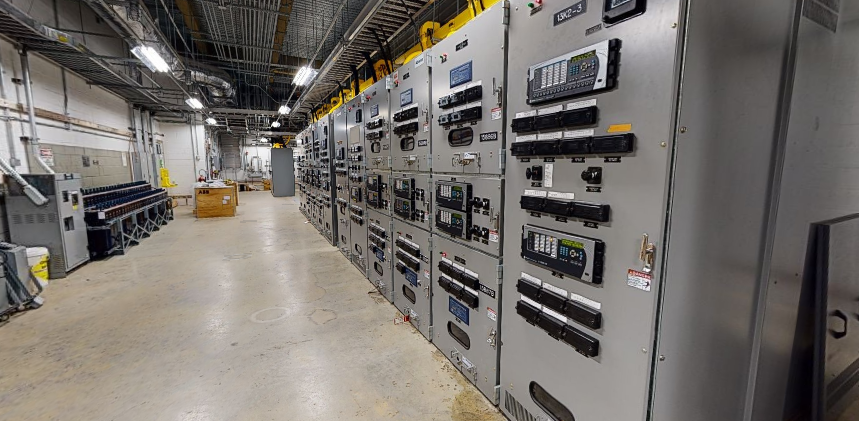
At the end of the internship, the interns were asked to pick their favorite activity. The virtual substation tour earned the highest rating. Interns were also asked for feedback on what they liked and what they would change about the tour. The only suggestion was to take more breaks in the 3D portion of future tours to avoid eye fatigue.
Overall, PHI feels that this intern event was a success, and the company plans to incorporate 3D scanning into other day-to-day jobs in the future. These scans could save an engineer or technician the time and effort of traveling to a site to field verify as-built conditions. Anything from test switch arrangements on a relay panel to the replacement of a disconnect switch could be verified using this technology. And safety is an important feature of the virtual experience, enabling participants to experience realistic simulations of the substation environment, making the effects of hazards more apparent without any risk of injury or fatality. Although PHI hopes to bring back the in-person aspect of the intern program in 2021, 3D scans will continue to be performed at substations going forward.
Illustration credit : banner and thumbnail by Vasil Dimitrov on iStock
